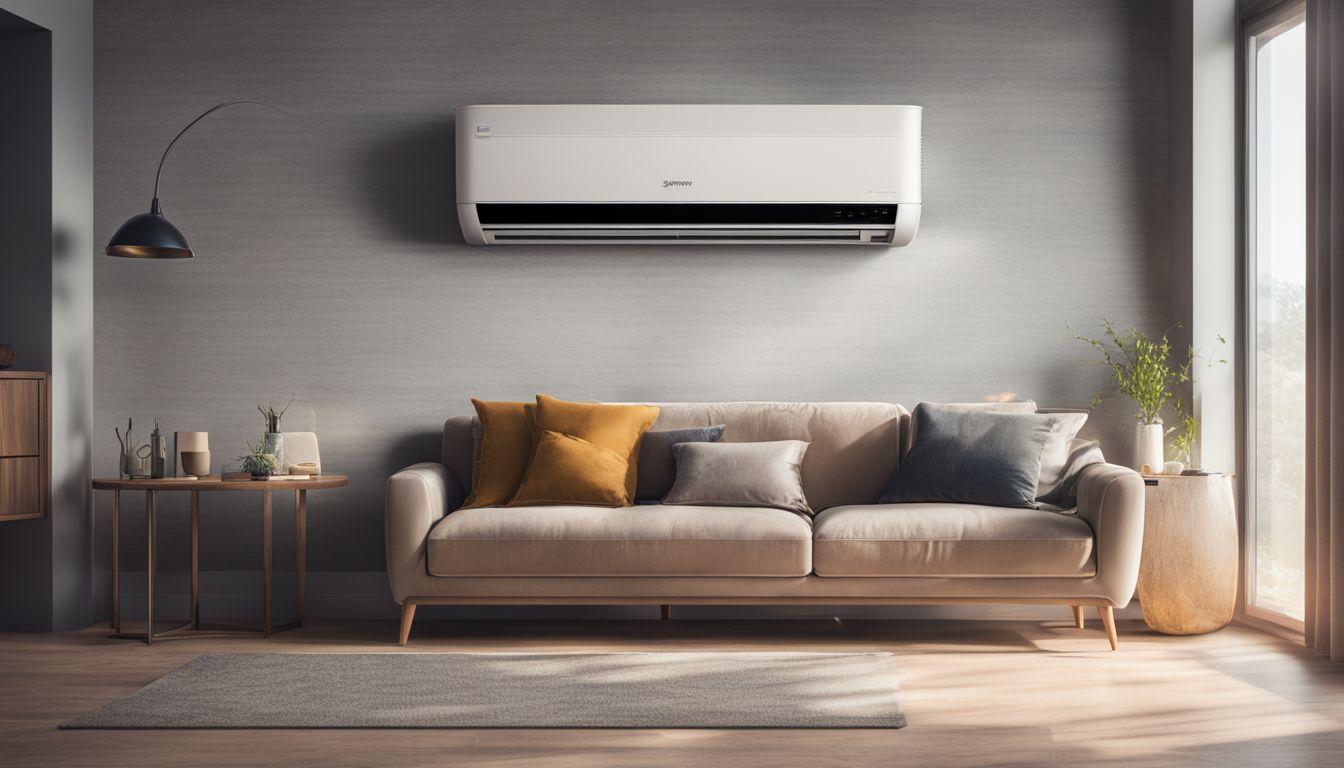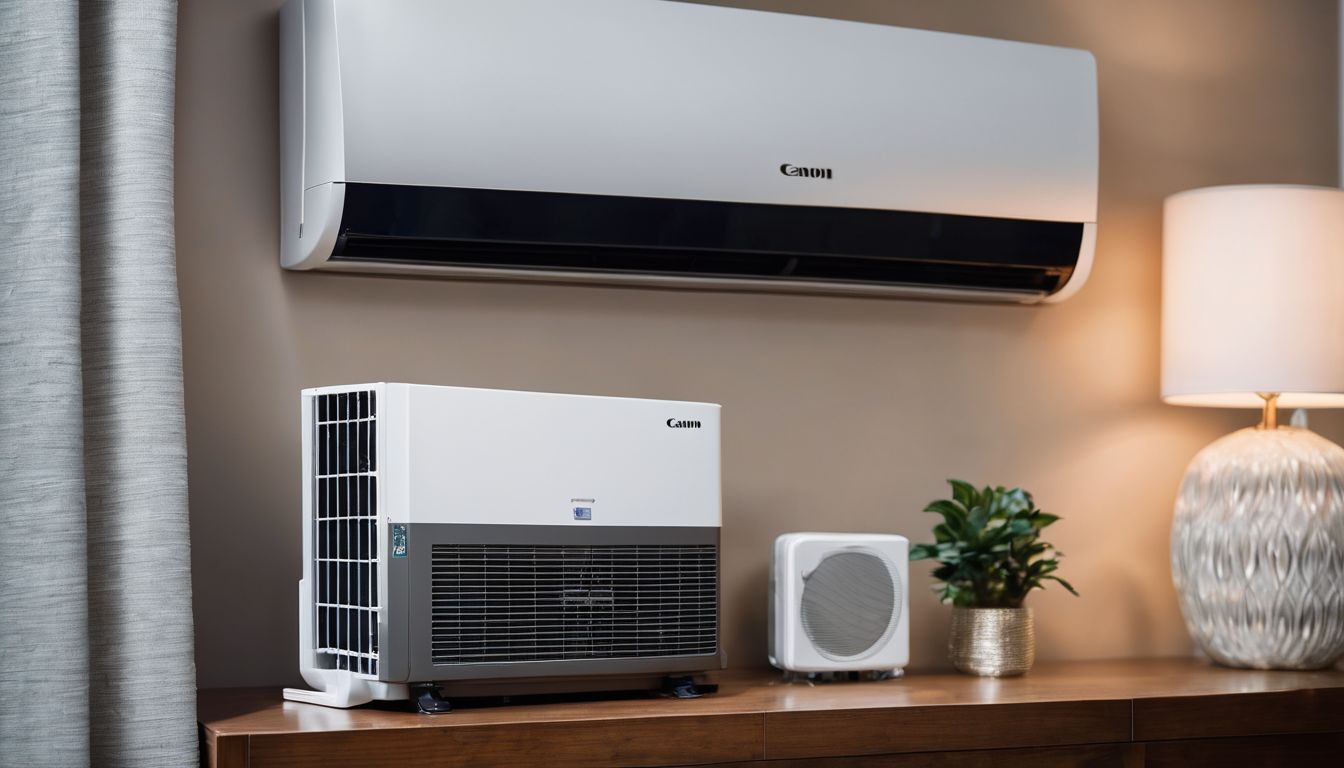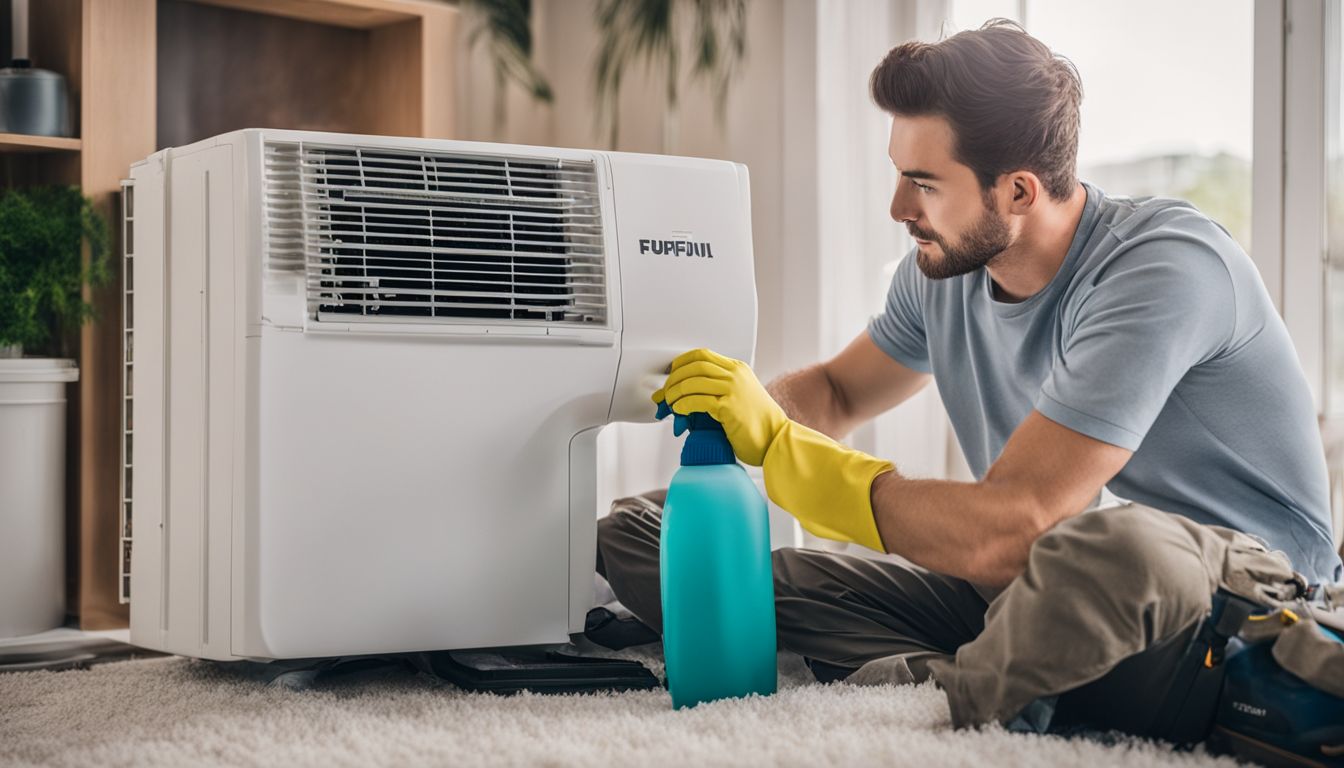Feeling hot and sticky at home can spoil your day, can’t it? Interestingly, air conditioners have been keeping our spaces cool for over a century. This article will unravel how these clever devices make summer days more bearable by chilling the indoor air in steps you’ll easily grasp.
Stay tuned to become a cool expert!
Basic Understanding of Air Conditioners
Air conditioners keep our homes cool by manipulating the properties of refrigerant, a substance designed for heat absorption and release. They cycle this refrigerant between the indoor unit, where it absorbs heat, and the outdoor unit, where it releases heat.
This process is continuous and efficient, thanks to the system’s main components: compressor, condenser coil, evaporative coil, and a series of fans.
The cooling magic starts in the evaporator coil located inside your house. Here, the liquid refrigerant evaporates into gas form as it absorbs heat from indoor air passing over it.
The now superheated vapour travels to the compressor outside. It’s here that the hot vapour gets pressurised, which raises its temperature even further before moving on to the condenser coils.
As outdoor air blows over these coils through another set of fans, excess warmth is expelled outside. The cooler refrigerant then cycles back indoors as a chilled liquid ready to absorb more heat – completing what’s known as a refrigeration cycle essential for climate control in buildings.
The Process of Air Conditioning
At the heart of air conditioning lies a remarkably straightforward process: it’s an intricate ballet of physics involving temperature manipulation and heat exchange. This system, with its meticulously designed components, functions ceaselessly to transform warm indoor air into a cool, refreshing breeze that offers respite from the heat.
Heat Absorption in the Evaporator Coil
Inside your air conditioner, the evaporator coil plays a crucial role. It’s where the magic of cooling begins. As warm air from your home blows over this coil, something amazing happens – heat starts to get absorbed by the refrigerant inside the coil.
This liquid refrigerant is like a sponge soaking up moisture on a hot day; it takes in all that warmth and begins to turn into a gas.
As this transformation occurs, the temperature drops significantly because heat is being drawn out of the air. The now cooler, less humid air flows back into your home, bringing down room temperatures and making you feel more comfortable.
Moreover, filters help ensure that this cool breeze is also clean and free from dust particles which can hamper both your health and the system’s efficiency. Maintaining these components ensures seamless operation so fresh, chilled air continues circulating throughout your space without interruption or increased energy consumption.
Temperature Increase in the Compressor
The compressor in an air conditioning system serves a crucial role, working much like the heart of the unit. It pumps refrigerant around the system, playing a key part in cooling your home.
As it moves the refrigerant through, it also compresses the gas. This action decreases its volume and at the same time increases both pressure and temperature.
Compression is vital; without this step, your aircon couldn’t transfer heat effectively outside. The high-pressure superheated vapour produced by compression carries large amounts of energy with it due to increased molecular activity.
The hot vapour then travels towards the condenser, ready for heat release into the surrounding environment.
Heat Transfer Outside
Once the refrigerant gas is compressed, it becomes hot. This heated gas then travels through coils on the outside of the building. As it winds through these coils, outdoor air blows over them, usually with the help of a fan.
This step is crucial because it removes heat from the refrigerant by transferring it to the outside air.
The cooled refrigerant now heads back indoors, but this time it has released its heat outdoors and transformed back into a cool liquid state via an expansion valve. Now ready for another cycle, this chilled substance absorbs more indoor warmth as it flows back into the evaporator coil, keeping homes nice and cool on sweltering days.
The Refrigerant Cools Down and the Process Repeats
Now carrying heat from inside the house, the refrigerant moves to the outdoor unit. Here it flows through coils and releases its warmth into the air outside with the help of a fan.
This process transforms the refrigerant from a hot gas back into a cool liquid. The cooling agent has shed its heat but hasn’t finished working yet.
Next, the cooled-down refrigerant returns indoors towards the evaporator coil. Passing through an expansion valve, it experiences a pressure drop which allows it to cool further and absorb more heat from your home’s air.
The cycle is set to start over – the cooling coil waits ready to collect additional indoor warmth and keep your living space comfortable.
Different Types of Air Conditioners
Understanding how air conditioning units function is one thing, but it’s also essential to know the various models that cater to distinct cooling needs. From sleek split systems perfect for individual rooms to robust packaged units designed for larger spaces, there’s a type of air conditioner engineered to suit every situation.
Split-System Air Conditioner
Split-system air conditioners have become a staple in homes seeking efficient and effective climate control. They feature two distinct units: one inside that handles the air filtration and circulation, and an outdoor unit that dispels heat away from the home.
These components are connected via pipes, making installation flexible to suit various building layouts.
The design of split-system air conditioning units allows for quieter operation since the noisier compressor is located outside. This setup also leads to improved energy efficiency, as it does not require extensive ductwork like central air systems.
Homeowners often prefer this type of system for its ability to maintain consistent temperatures throughout their living spaces without significant alterations to existing structures.
Packaged Air Conditioner
Packaged air conditioners combine cooling and heating in one compact system. These units house the evaporator, compressor, and condenser in a single cabinet, making installation simpler with no indoor unit required.
Typically mounted on rooftops or next to building foundations, they connect directly to ductwork supplying conditioned air throughout the structure.
These systems are versatile for different settings including homes without sufficient space for split systems, as well as commercial buildings that demand a streamlined HVAC solution.
With options for reverse cycle operation, packaged air conditioners can function as heat pumps during colder months providing an efficient way to maintain comfortable temperatures year-round.
Ductless Air Conditioner
Ductless air conditioners, or mini-split systems, are a clever solution for cooling rooms without the need for extensive ductwork. These units comprise an outdoor condenser and an indoor air-handling unit.
They’re connected by copper refrigerant tubing, ensuring efficient heat transfer from inside to outside your home. Homeowners appreciate the small size and zoning capabilities of these systems because they can target specific areas for cooling.
Unlike traditional central HVAC units that push cooled air through a network of ducts, ductless systems deliver air directly into different zones. This approach eliminates energy loss associated with ductwork and allows for more precise temperature control in individual rooms.
With their ease of installation and ability to cool spaces effectively, it’s no wonder that many are choosing ductless options as part of their home comfort solutions.
Advantages of Air Conditioning

Air conditioners do more than just cool the air; they can vastly enhance the quality of your indoor environment. Filtering out dust, pollen and other pollutants, these systems ensure a cleaner breathing space, thus reducing the chances of allergic reactions and respiratory issues like asthma.
They play a critical role in maintaining low humidity levels inside homes and offices which helps prevent dampness that often leads to mold and mildew.
Comfortable room temperatures have a direct impact on well-being and daily performance. Cool spaces provided by air conditioning are essential for better focus and increased productivity, especially during hot summer.
Moreover, with windows kept closed due to an operating system, noise from outside is greatly reduced as well as the number of insects or pests that could enter your living or working space—ensuring peace of mind alongside constant comfort.
At night, an air-conditioned room promotes restful sleep by keeping temperatures at an optimum level for our bodies to relax properly.
Conclusion
Understanding the inner workings of an air conditioner turns this everyday device into a marvel of science and engineering. With its cycles of compression, condensation, and evaporation, it quietly masters the indoor climate.
Picture the refrigerant as a shape-shifter: in one moment a liquid absorbing your room’s heat, in another, it transformed into a gas journeying outside to free that warmth. This intricate dance not only cools our homes but also improves our air quality with filters trapping dust and allergens.
Imagine how applying this knowledge can lead to smarter use and energy savings. Take pride in knowing the simple yet sophisticated mechanism that keeps you cool on even the hottest days.
To discover more about the benefits of air conditioning, visit our detailed guide here.
FAQs
1. What makes air conditioners cool down a room?
Air conditioners use a cooling process similar to fridges, where they remove warm air from the room and replace it with cooler air through copper tubing and evaporative cooling techniques.
2. How do central air conditioners differ from portable or split system units?
Central air conditioners cool entire buildings through a network of supply air ducts, while portable units are standalone appliances that can move between rooms, and split system units have separate indoor and outdoor sections for more efficient space conditioning.
3. Can using an air conditioner affect the environment?
Older models of HVAC systems used chlorofluorocarbons (CFCs) which harmed the ozone layer. However, new standards set by the Montreal Protocol ensure that modern air conditioning systems use environmentally safer refrigerants to help reduce global warming and protect the atmosphere.
4. Does an HVAC system only provide cold air during hot days?
No, HVAC systems can both heat and cool spaces; they consist of a furnace for heating rooms during cold weather as well as an evaporator coil for cooling when it’s hot outside.
5. Why do we need dehumidifiers or humidifiers along with our AC unit?
Maintaining good indoor air quality isn’t just about temperature—dehumidifiers reduce excess moisture in humid climates. At the same time, humidifiers add necessary moisture in dry conditions ensuring comfort alongside proper heating and cooling.
6. Will running my AC increase carbon dioxide emissions?
If your power comes from fossil fuels, then yes – using your AC could contribute to carbon dioxide emissions due to higher fuel consumption but choosing energy-efficient models or renewable energy sources helps lower this impact on air pollution.





